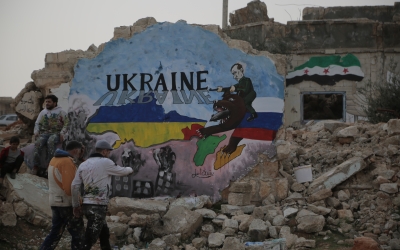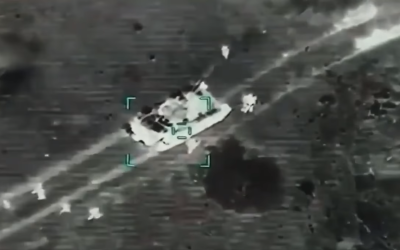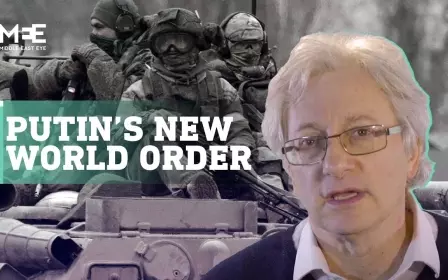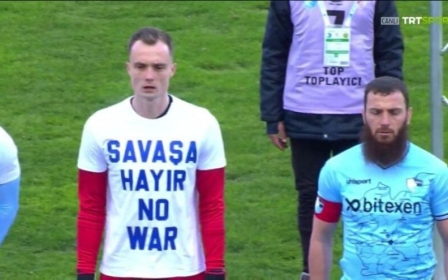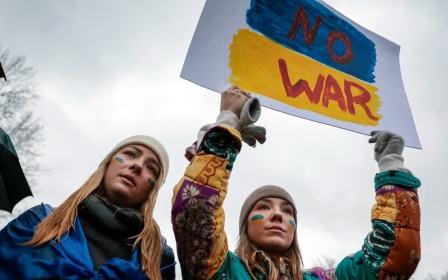Russia-Ukraine war: How Putin is using lessons learned in Syria
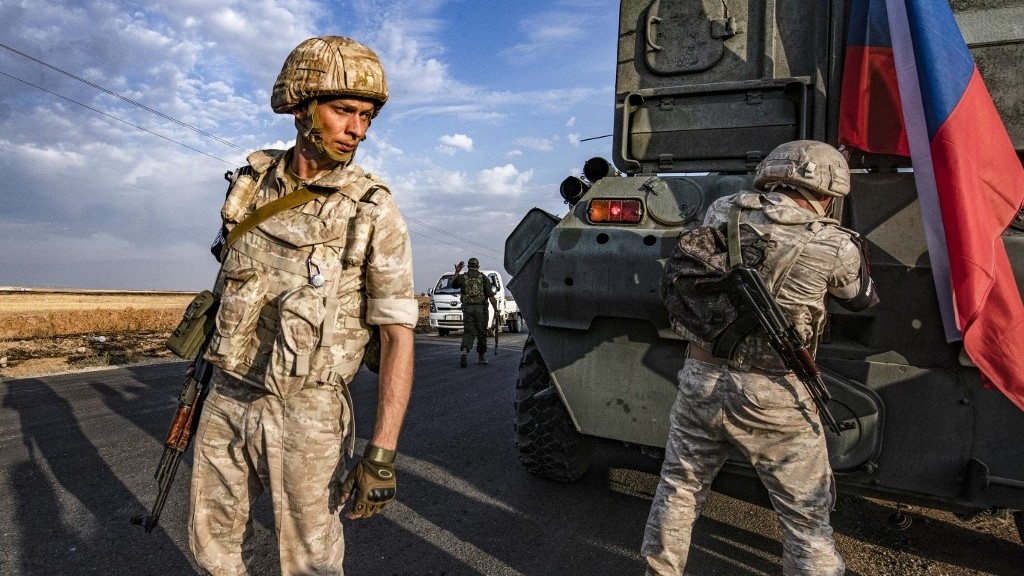
Think back to September 2015. Before the invasion of Ukraine last week, that was the last time Russian President Vladimir Putin initiated a risky, large-scale military operation - and it was in Syria.
There are countless differences between Moscow’s ongoing attack on Ukraine and its six-year-old military intervention in Syria which turned the tide of the war for Syrian President Bashar al-Assad.
New MEE newsletter: Jerusalem Dispatch
Sign up to get the latest insights and analysis on Israel-Palestine, alongside Turkey Unpacked and other MEE newsletters
But the two are inextricably linked now more than ever. In Syria, Russia has tested and refined cutting-edge weapons and secured air and naval bases on the Mediterranean, all of which are proving key for Ukraine, say analysts.
Perhaps most importantly, they say, Russia’s powerplay in Syria has set the tone for a more aggressive, adventurous foreign policy, initially in the Middle East and now unfolding in Ukraine.
“In Damascus, Moscow is defending its influence on the global stage,” defence analyst Ruslan Trad, co-founder of conflict and military history journal De Re Militari, told Middle East Eye.
“In Ukraine, it is defending its image as a regional power dominating the past - and in Putin's mind - the future of local governments.”
Opportune moment
As Europe begins to wake up to the severity of Putin’s attack on Ukraine, unprecedented countermeasures are coming in thick and fast.
The US, UK, and EU have agreed to cut Russia off from Swift, the main international payment system, and Germany plans to deliver 1,000 anti-tank weapons and 500 "Stinger" class surface-to-air missiles to Ukraine, to name but a few measures.
'The Syrian experience showed Russia the importance of realising and accomplishing strategic objectives'
- Aymenn Tamimi, George Washington University
The sudden offensive may have caught many off-guard in Europe. But for those who have covered Russia’s role in Syria, this is merely deja vu.
In 2015, with the Syrian government in desperate straits, Putin found an opportune moment to attack with full force and perpetuate Russia's standing regionally and internationally.
That March, Syrian government forces struggled to repel an offensive by Islamist coalition Jaysh al-Fateh that was advancing worryingly in the Lattakia countryside area.
By August 2015, a rapid collapse of Syrian forces in the northwest worried the Russians who feared that rebels might overrun coastal areas, including Russia’s only naval base on the Mediterranean in the Syrian port city of Tartous.
Ultimately, it was the threat to this facility, in use since the days of the Soviet Union, which spurred the Russians to intervene.
That base - which Russia signed a free, 49-year lease for in 2017 - is proving to be critical for Russia’s attack on Ukraine. Just days before Putin launched his blitzkrieg invasion, Russian Minister of Defence Sergei Shoigu oversaw naval drills in Tartous.
Russia has moved equipment and warships from Syria to Ukraine to reinforce its Black Sea fleet and its allies in the Donbas region, Trad said.
Weapons testing
In Syria, as Russia brought an overwhelming bombing campaign with powerful shock-and-awe tactics, it found an ideal theatre to test and refine its military capabilities and weapons, some of which are most certainly being deployed in Ukraine now.
By the time Putin announced a withdrawal of the majority of Russian troops on 14 March 2016, the Russian ministry of defence claimed that over 9,000 sorties had been conducted.
'One of the helicopters we saw today is the result of the Syria operation'
- Russian Defence Minister Sergei Shoigu
During that time, more than 320 types of weapons were tested, Defence Minister Shoigu told employees at Russian helicopter manufacturer Rostvertol in July 2021
"One of the helicopters we saw today is the result of the Syria operation," he said. "Now we have such weapons, thanks to the operation in Syria.”
The intervention also provided an opportunity to showcase new Russian weapons, including the SU-34 jets which use laser-guided bombs and Kh-555 and Kh-101 missiles which were dropped from strategic bombers and had the accuracy of US Tomahawks.
Moreover, Russian naval forces launched 3M14T and 3M14K Klub-K missiles, previously unknown naval cruise missiles which have a range of 2,000 km, at Syrian targets from the Caspian Sea.
Another power play
All of this created a new, modern experience of Russian success in a field of active war and nourished an appetite for power, both of which could be crucial in Ukraine.
“The Syrian experience showed Russia the importance of realising and accomplishing strategic objectives,” said Aymenn Tamimi, a research fellow at George Washington University’s programme on extremism.
“But the war also brought consequences that were not necessarily anticipated and for which Russia has tried to formulate new arrangements. For example, the northwest ceasefire at the moment is essentially imposed by Turkey’s sending in of thousands of its troops to block further offensives.”
While some like US President Barack Obama believed Russia would end up mired in Syria, that hasn’t happened, Tamimi said.
“I don’t think Syria has either proved to be a master demonstration of strategic brilliance but nor is it a quagmire for Russia,” he said.
While the two conflicts may look very different, Trad said, the goals for Russia are the same: power.
“While in Syria the Kremlin has found an opportunity to step into the Mediterranean, gain access to a natural deep sea port and use Syria as a springboard to Africa and Libya, Ukraine occupies an important place in Russia’s strategy and mentality,” he said.
“Ukraine is an important element in the defence of the Russians, and they see the country as a buffer zone in which there can be no power other than Russia.”
This article is available in French on Middle East Eye French edition.
Middle East Eye delivers independent and unrivalled coverage and analysis of the Middle East, North Africa and beyond. To learn more about republishing this content and the associated fees, please fill out this form. More about MEE can be found here.


